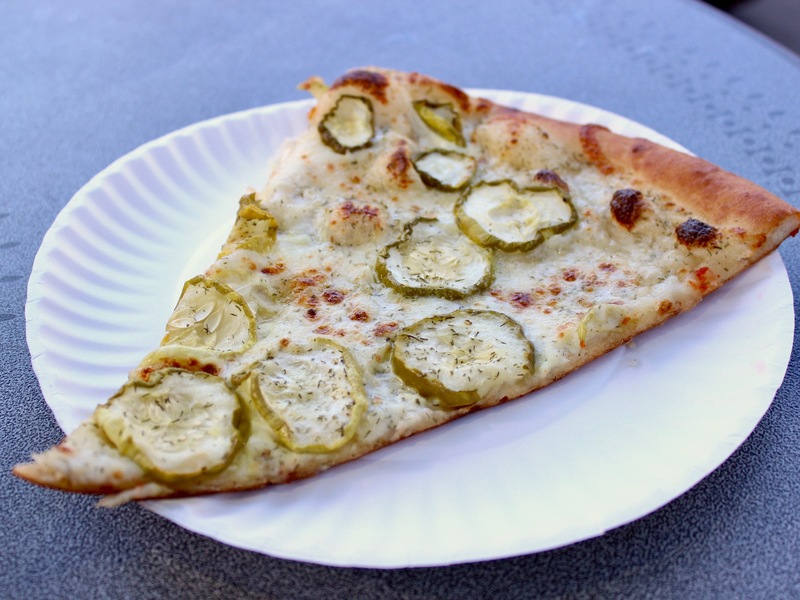Livestock shows will never generate the interest or appeal of the National Football League. Even televised soccer would probably get better ratings than a cattle, swine or sheep competition.
Nonetheless, livestock shows like the ones at the Wisconsin State Fair are just as competitive as any professional or collegiate sport.
The swine herd manager at Oklahoma State University, Brock grew up on a Missouri dairy farm where he learned the virtues of hard work. Shortly after his graduation from OSU in 1979, he was hired to work at the university's swine farm. He's been judging shows for more than three decades.
Before a Saturday show at the Wisconsin State Fair, Brock took some time out to talk to OnMilwaukee.com about judging, and the competitive nature of livestock shows.
OMC: How long have you been judging?
Kim Brock: About 30 years. I judged on a livestock judging team at Oklahoma State. In my early years after college, I judged cattle and sheep shows but it wasn't before long until I began to specialize in swine judging.
OMC: How does one get into judging?
KB: There's different ways to arrive. My avenue was being on a competitive livestock judging team at OSU, which is one of the top schools in terms of competitive livestock judging. After college, in my current job, I've had many, many opportunities to judge swine shows all across America. In fact, I've judged in 30 different states.
OMC: A travel schedule like that has to help you attract new talent to the program, not unlike a college football or basketball coach.
KB: I get to go out and recruit potential college students to OSU, which is one of the top animal science schools in the country. To be able to expose myself to those potential students and promote OSU while judging swine shows is something the administration looks at as a positive interaction between college students and pork producers.
OMC: And at the same time, you get the opportunity to get your name out their and build on your reputation as a judge.
KB: A lot of university people, because they get involved with livestock judging teams, get to get involved with judging shows. A lot of producers get opportunities to judge. If they're good with the kids, good with the microphone and do a good job placing the animals, they grow in popularity. It's kind of a "how good you do" that determines your attraction as a judge. There isn't a school that we go to do learn it, unlike some horses where you need to be certified. You learn on your own and a lot of it is word-of-mouth.
OMC: You mention how things kind of change over the years in terms of what producers are looking for. How, as a judge, do you keep up with that stuff?
KB: As you do it, you keep up. In 1999 to 2004, the judges were looking for muscle to an extreme where some of the animals couldn't walk. They were so extremely lean that packers didn't want the pigs. We actually had a symposium -- at OSU -- in 2002 to help create a more positive direction for youth market hogs. We listened to what packers had to say, what the consumer had to say, what judges have to say and we took show managers into consideration. We met and since them, we've been in a more positive direction. Pigs reproduce quickly and things can change for the negative quickly, so communication and word of mouth help update judges as to what needs to be looked at.
OMC: What does a judge look for when he's handling a show? On first glance, at least to a city boy like me, most of the animals look very, very similar.
KB: You're looking for the ideal pig. Sometimes you're judging breeding swine, which are used specifically for reproduction and sometimes you're judging market swine, which are animals produced to become pork cuts meant for human consumption. We've learned and trained young people, and all pork producers have some idea, of what the perfect animal is supposed to look like. Supposedly and ideally, the judge is supposed to know and so they're preparing these -- many times -- youth exhibit and youth project animals to grow their animal to meet what the ideal animal should look like.
OMC: Is it possible to explain what the "ideal pig" is supposed to look like, or is it something that's easier done than said?
KB: I can explain it to some degree. In a market animal, what you want is a pig that's grown fast and has the structural correctness to allow him to be a durable and easy-going pig. Growth rate is important to a pork producer, so you want one that's grown fast. Compositionally -- meaning fat and muscle -- you want a pig that is ideal amount of back fat that they have. Packers want a little more fat than they did 10 or 12 years ago, but we learn that exterior fat has an influence on the eating qualities of pork.
You're looking for back fat, you're looking for a good amount of muscle, but not to an extreme that it limits the mobility or structural correctness of a pig. You look at all of those things into a complete package. You want a pig that looks good, a pig that walks good, a pig that has a lot of body, has a performance-look to it and still is compositionally correct when it's hanging on the rail. The ideal changes over time, depending on the packer and the consumer, depending on a consumer's tastes which drives the packer. A judge will come from a background that allows them to know what a good animal should look like, even with a level of variation between them.
OMC: Do you prefer judging youth shows or open shows?
KB: Judging the adult producers' outstanding pigs is something I've done a lot of and it's great. But it's not nearly as rewarding as judging the 4-H or FFA youth project animals. I enjoy working with the kid in 4-H and FFA and encouraging them. It teaches them responsibility, the animal industry they're involved in - be it cattle, beef or swine - and it's a great learning tool. To judge their project animals after all their hard work, and encourage them ... that's youth development and education. It's more rewarding to judge their pigs than some of the old breeders' pigs.
OMC: The effort these kids in is amazing and so is the competitive nature -- good-hearted as it is -- that these kids have for their animals. As the number of farms dwindles, how important is it to keep young people on the farm, so to speak?
KB: It's competitive, for sure. The industry has changed so much. In the last 20 years, the large corporations are controlling the pork industry, forcing the independent producer out of the business. What's encouraging is the independent producers continuing to raise the kids' project pigs. We're seeing an increase in kids using pigs as a 4-H or FFA project. That's very, very positive. It not only teaches them about the swine industry, but also gives them an opportunity to learn responsibility and how to take care of an animal. That's something that a kid will look back and realize is an invaluable lesson.







